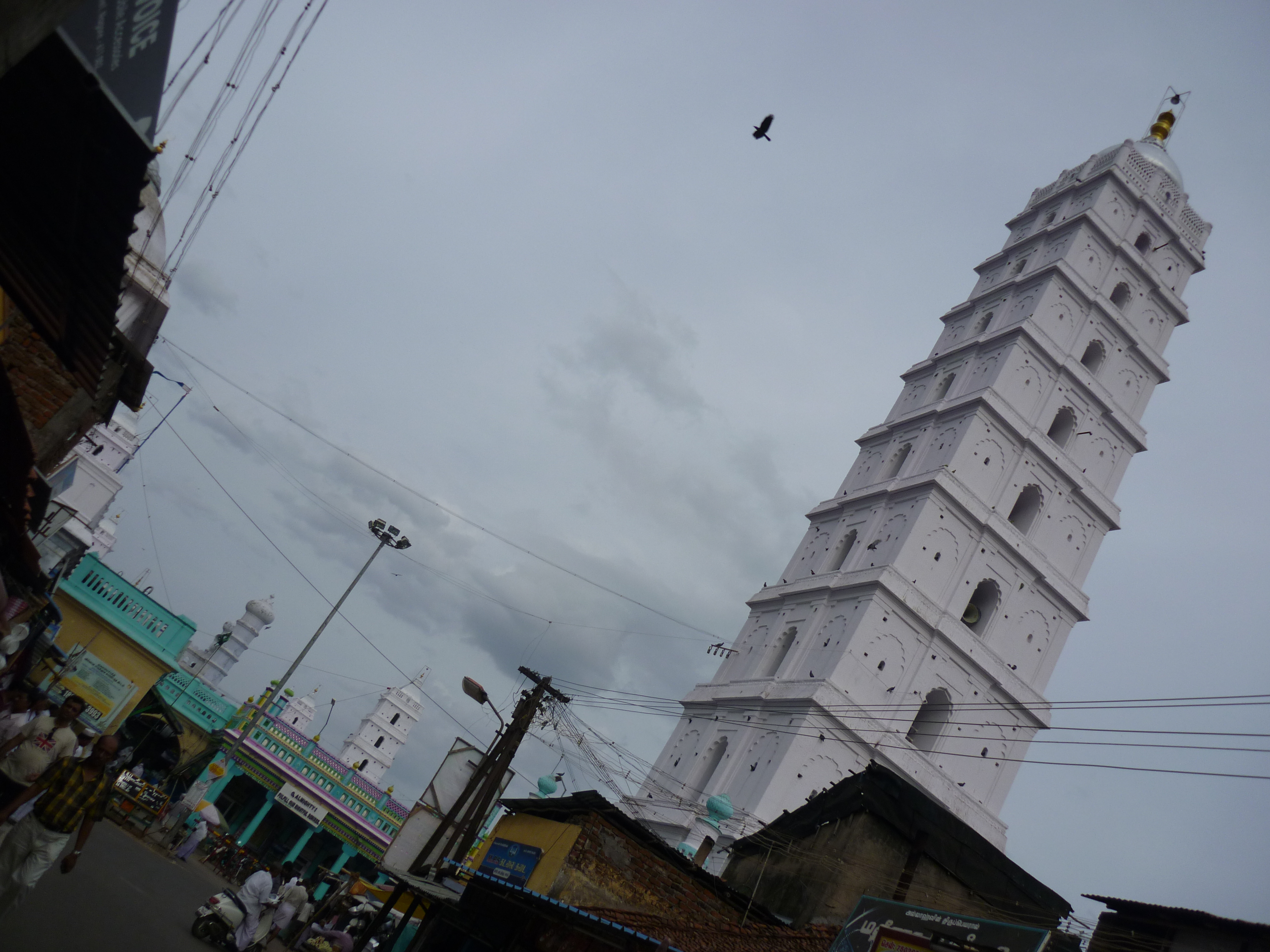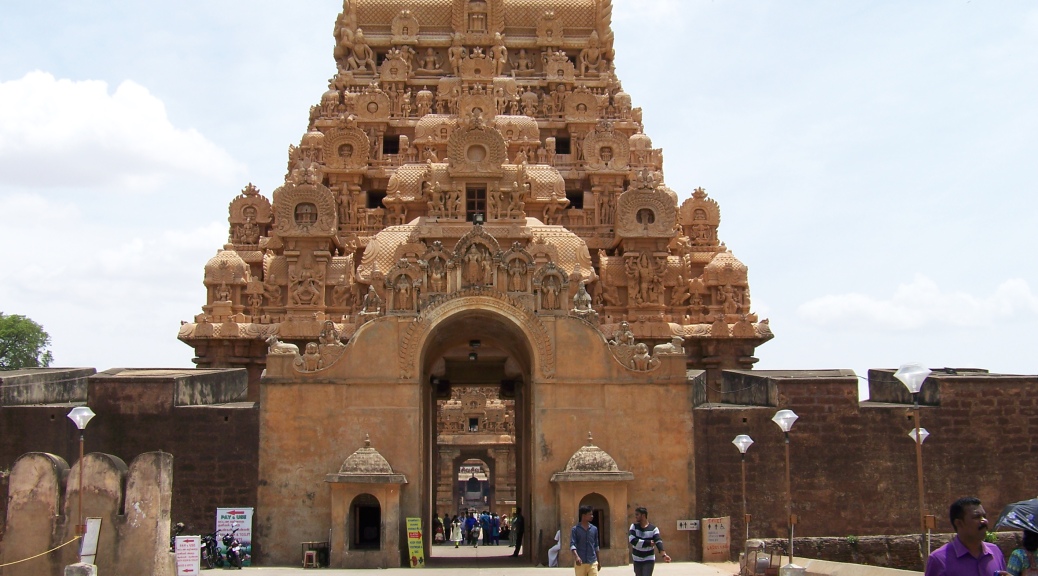Abstract: This was a family backpacking trip on a long weekend. The target destination was the southernmost tip of mainland India- Kanyakumari. We took a train on both ways. Hence, we had planned our route in such a way that we didn’t repeat the trail and could explore new places on both ways. Here’s a glimpse of the itinerary before I narrate the details:
Overnight train: Bangalore to Nagercoil by the ‘Nagercoil Express’
Day 1: The green stretch of Nagercoil comprising Padmanabhapuram palace, Udayagiri fort, Mathur aqueduct, Thiruvatturu Adi Perumal temple, enter the east coast and drive to Kanyakumari for sunset
Day 2: Catch the sunrise at Kanyakumari, a ferry ride to Vivekananda Rock, Vatakottai fort, Suchindran temple and board the night train at Nagercoil.
The details:
How can the thought of standing on the edge of land be expressed? As a kid, I always wondered how we stood steadily on a round globe… My curiosity grew further, when I was handed a world map for the first time. On it, the round globe looked flat. And on the world that looked flat on a map, India took the center position. And when carefully observed, I noticed that there is nothing below India but only water. On a closer look of the Indian sub-continent, Kanyakumari pops out in the edge, as the southern-most tip of the Indian mainland. Then I made a wish- ‘to make a journey to that end of land’…
Our overnight train journey was very pleasant through the route that was lush green and beautiful, even in the peak of summer. As the train entered Tirunelveli district, the landscape took a different look. Thousands and thousands of windmills seemed like they were strewn around, until the horizon. Our train slowly chugged past the hills only to later reach its destination- ‘Nagercoil junction’, the next morning.
Day 1:
We freshened up at the station and hired a taxi for the rest of the day. I managed to explain our itinerary to the driver with my broken Tamil and he managed to understand the jist: ‘To cover all the places listed down and ensure we make it to the Sunset point at Kanyakumari in time..!!’ That said, our sightseeing started in the order given below:
- The Nagaraja temple– The temple that gives its name to the city.
- We spent a good couple of hours photographing the BEAUTIFUL Padmanabhapuram palace in Thuckalay. It is by far, one of the beautiful palaces in South India. You don’t regret paying the entry fees as there is so much effort that has gone into the maintenance of this wooden palace. A surprising fact I discovered was that, although this palace is located in the state of Tamil-Nadu, it is maintained and controlled completely by the Kerala Government.

3. Next was the Udayagiri fort. It wasn’t a great place as a traveler, but maybe a paradise for the bird watchers. It is converted into a mini zoo and houses the memorial of Commander De Lannoy- of the Dutch east India company.
4. The hanging trough / aqueduct at Mathur– The longest in Asia, is set amid a very beautiful surrounding of lush green cashew, coconut and rubber plantations.
5. Adi Perumal temple at Thiruvatturu- adorned with intricate sculptures (of the Cheras period probably). It was strange to know that the people of the Muslim community do not and cannot live in a radius of 6kms around this temple due to a curse by one of the rulers in history. Tippu Sultan had tried to steal the main idol with the help of the Nawab of Arcot. Also, this is probably the only temple where a grave of a ruler is seen next to the main idol of the temple.

6. Jadeshwara temple and Mariamman temple are at a walkable distance from Perumal temple. It is here, Lord Vishnu had come to seek support of his sister- Parvathi to convince Goddess Lakshmi when the latter suspected Vishnu of being involved in an extra-marital affair while he had gone hunting in realty.. Strange legends!!
7. Chittaral jain temple at Vellomcode- is a part of the rocky hills. It is small but a nice place for the history buffs and the pilgrims alike.
8. Thiraparappu Mahadeva temple– This place was a turn off with very less to NO water in the waterfalls and being overly crowded with tourists(NOT pilgrims!!). I suppose it will be worth the while only if it is monsoon and when the river flows with all its might down the gorge forming the beautiful waterfalls and the temple at the backdrop.
9. Pechiparai dam– We gave this one a miss anticipating disappointment with no water in the dam.
For this trip, the drive was the highlight and not the places visited. The main road would have traffic and that would waste our time. Trying to ensure that we could cover all the places, our driver took us through the remote roads of Nagercoil. These narrow and winding roads flanked by coconut trees on either sides were probably least exploited by a normal tourist and hence we could have a feel of the rustic part of an otherwise pilgrim city. The cool and pleasant weather was another surprise. What was more surprising was that the weather in Nagercoil supported the spices plantations, in an otherwise hot and humid climate that Tamil Nadu is recognized with.
It was the southern-most part of the western coast of India, that we were planning to drive through, to reach the end of land. Suddenly, the weather changed and the dark clouds hovered over us. As we were approaching the seashore, the clouds broke hell. As we watched the rain batter, we had lost an hour doing nothing. This meant that if we had to arrive at the Sunset point on time, we could only drive through without stopping anywhere. We drove past the Thengapattinam beach, Colachel port (it has a victory pillar to commemorate the victory of the Travancore king over the Dutch army), Mandaikadu temple, Muttom beach, Tekkurichi beach, Sanguthurai beach, Sothavilai beach and Manarkudi. When we finally reach our destination, what awaited us was sheer disappointment. There were clouds, clouds and more clouds..!!! We spent some time with the waves and headed to the hotel in the city where we had booked our stay.
Day 2:
We saw ourselves seated amid thousands of people who had gathered there for the same reason as us. The famous ‘SUNRISE of Kanyakumari’. We watched the sea change its colour from pitch black to different hues of the spectrum until dawn’s break. But, again our woes with badluck continued on day 2 as well. A nebule of cloud sat adamantly blocking the rising sun.. adding much to all our disappointment from the previous evening.

We visited the ‘Kanyakumari Amman temple’ and the confluence point of the three oceans along with the other touristy places in the city (There is enough written about the places to see in the internet- I don’t want to repeat the same stuff again!) The wait in the queue that was at least 3 furlongs, under the hot sun was a big turn off. My expectations of finding the calm I was told about across the waters (Read it- the Vivekananda Rock) was let down by the galling tourists who had thronged there in thousands on that weekend. We left Kanyakumari in the afternoon, all disheartened by the way things turned out on a much anticipated trip.
We did a quick visit to Vatakottai fort- a small but a calm place away from the vexing crowd. We then stopped at Suchindran temple that stood grand with its majestic tower, but remained closed when we arrived there. We spent some time sitting by the temple pond and feeding the fishes with puffed rice.. And we finally left back to Nagercoil to board our evening train back to Namma Bengaluru.
Summary:
Kanyakumari, being the edge of land is more of an emotion that every Indian grows up listening to. So, this is one of those places in every Indian’s bucket list. Mine was an ideal itinerary covering a lot of places. But the rain gods didn’t seem to be in our favour. But I would like to mention the highlights that SHOULD go into the list of anyone visiting Kanyakumari:
- When you go to this particular spot at Kanyakumari- You can feel the waves touching your feet from 3 directions- left, right and center.. quite literally..!! That’s when you sense that you are standing in the end of land where the three seas meet- The Bay of Bengal, The Arabian Sea and the Indian Ocean. The feeling can only be experienced and not expressed.
- The ruby nose stud adorned by the chief deity- Goddess Parvathi is believed to be shining so bright that history has it that many ships had been misguided due to its light. And that’s also the reason why the sea facing door on the eastern side of the temple is always kept closed, except for a few special occasions.
- Lot of shopping… Shell crafts..!!




































